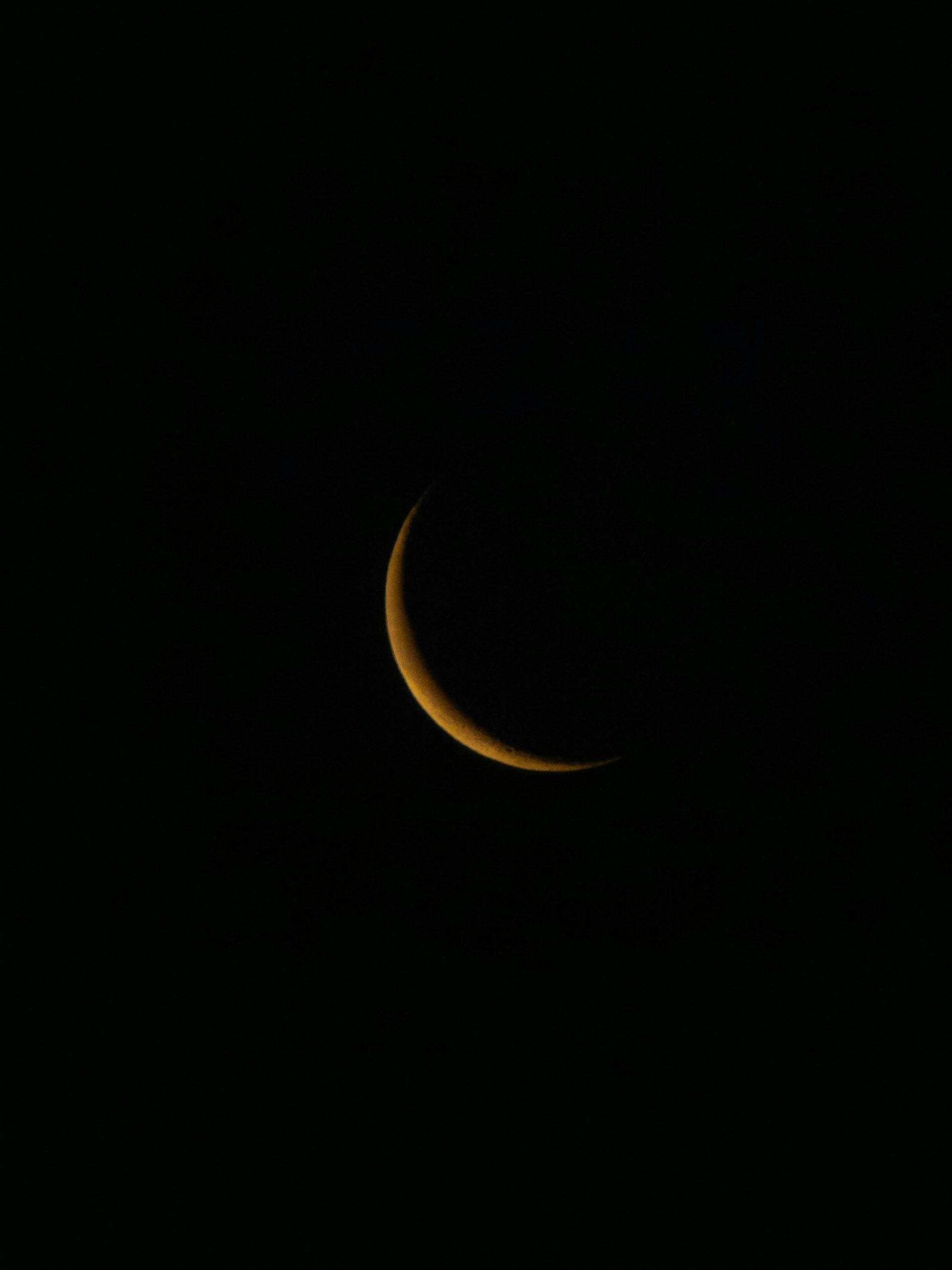Moonsighting Pakistan: Discover The Truth Behind Lunar Observations and moonsighting pakistan
When it comes to moonsighting in Pakistan, many questions arise about how the exact date for Islamic months, especially Ramadan and Eid, is determined. Have you ever wondered why moonsighting Pakistan remains a hot topic every year, sparking debates and discussions nationwide? This article dives deep into the truth behind lunar observations in Pakistan, revealing the fascinating science and cultural significance that shapes these important decisions. Whether you’re curious about the official moonsighting committees in Pakistan or the role of astronomical calculations, keep reading to uncover everything you need to know.
In Pakistan, the sighting of the new moon marks the beginning of important Islamic months, but the process isn’t always straightforward. Many people rely on traditional moonsighting methods, while others advocate for modern astronomical calculations to determine the exact dates. This clash between tradition and technology often leads to confusion and differing opinions across regions. So, what really drives the moonsighting process in Pakistan? And how do experts combine scientific lunar observations with religious practices to ensure accuracy and unity?
Exploring the latest moonsighting updates in Pakistan can help you stay informed and prepared for upcoming Islamic events. From trusted moonsighting apps and websites to expert announcements, there are numerous resources available to make the process clearer than ever. Join us as we separate myths from facts, explain the significance of the moon in Islamic culture, and guide you through the intriguing world of moonsighting Pakistan. Ready to discover the truth behind lunar observations? Let’s get started!
How Accurate Are Moonsighting Methods in Pakistan? Unveiling the Science Behind Lunar Observations
How Accurate Are Moonsighting Methods in Pakistan? Unveiling the Science Behind Lunar Observations
In Pakistan, moonsighting is not just a tradition but an essential practice that determines the start and end of Islamic months, especially Ramadan and Eid. The question many ask is, how accurate are moonsighting methods in Pakistan? This topic has been debated for years, involving religious scholars, scientists, and common people who rely on these observations. Understanding the science behind lunar observations, the methods used in Pakistan, and their reliability helps to clear the confusion often surrounding moonsighting in the country.
What is Moonsighting and Why It Matters in Pakistan?
Moonsighting refers to the observation of the new crescent moon marking the beginning of a new lunar month. Islamic calendar follows the lunar cycle, which is about 29.5 days long. The sighting of the crescent moon, called Hilal, marks important dates in Islamic rituals. Pakistan, being a Muslim-majority country, places great importance on accurate moonsighting for religious observances.
Moonsighting is important because:
- It determines the start of Ramadan, Eid-ul-Fitr, and Eid-ul-Adha.
- It affects religious fasting and celebrations.
- Communities depend on official moonsighting announcements for uniformity.
However, moonsighting in Pakistan is often complicated by weather conditions, geographical differences, and sometimes conflicting reports from different regions.
Methods Used for Moonsighting in Pakistan
There are mainly two approaches used in Pakistan for moonsighting:
-
Physical Observation (Traditional Method):
This involves individuals or groups looking for the crescent moon with the naked eye just after sunset on the 29th day of the current lunar month. If the moon is not visible, the month completes 30 days. This method depends heavily on weather conditions and human eyesight. -
Astronomical Calculations (Scientific Method):
Astronomers use mathematical models and software to predict the moon’s position, age, and visibility. These calculations are based on lunar cycles, earth-moon-sun geometry, and atmospheric factors. Some organizations in Pakistan use these predictions to announce the lunar month’s start.
Accuracy and Challenges of Traditional Moonsighting
Traditional moonsighting has been practiced for centuries but it comes with its own accuracy problems:
- Visibility is affected by clouds, dust, and pollution, making it sometimes impossible to sight the moon even when it has appeared.
- Human error and variations in eyesight can cause false positives or missed sightings.
- Different regions in Pakistan may have different horizon views and weather, leading to conflicting reports.
- Sometimes, political or social pressures influence the announcement of moonsighting, causing inconsistencies.
Despite these limitations, the traditional method is still very popular because of religious significance and community acceptance.
Scientific Moonsighting: What Does Science Say?
Astronomical calculations provide a more standardized way to predict the moon’s visibility. Scientists use parameters such as:
- Moon’s age: The time since the new moon phase.
- Elongation: The angle between the moon and the sun as seen from Earth.
- Altitude: The height of the moon above the horizon at sunset.
- Lag time: The time between sunset and moonset.
For example, the Danjon limit suggests that the moon can be sighted only if the elongation is more than 7 degrees and the moon is above the horizon by a certain altitude. These criteria help to predict whether the moon can be seen with the naked eye or not.
Using these methods, predictions can be made days in advance, reducing the chances of errors. However, these calculations often conflict with traditional sightings, leading to disagreements.
Historical Context of Moonsighting Practices in Pakistan
Pakistan inherited moonsighting practices from the larger Muslim world, where visual moon observations were the norm. Over time, as astronomy advanced, some Muslim countries started adopting calculations alongside physical sightings. Pakistan has seen mixed approaches:
- In early decades, physical sighting was the only accepted method.
- Since late 20th century, astronomical institutions like the Pakistan Meteorological Department began offering scientific data.
- Religious bodies and moonsighting committees still rely primarily on physical sightings.
- In recent years, debates intensified over adopting calculations fully, but consensus remains elusive.
Comparison Table: Traditional vs Scientific Moonsighting in Pakistan
| Aspect | Traditional Moonsighting | Scientific Moonsighting |
|---|---|---|
| Method | Naked eye observation | Astronomical calculations and predictions |
| Accuracy | Variable, weather-dependent | Generally high, based on precise data |
| Reliance on Technology | No | Yes |
| Community Acceptance | High, tied to religious beliefs | Moderate, some resistance due to tradition |
| Conflict Potential | High, due to regional differences | Lower, predictions standardized |
| Weather Impact | High | None |
Top 5 Challenges Faced in Moonsighting Pakistan: What You Need to Know for Ramadan 2024
Moonsighting in Pakistan has always been a topic filled with anticipation and sometimes confusion, especially when it comes to determining the start of Ramadan. For 2024, many people in Karachi and across the country are once again focusing on the challenges surrounding lunar observations. It’s not just about looking at the moon, but understanding the various difficulties that come with it. This article explores the top 5 challenges faced in moonsighting Pakistan, what you should know for Ramadan 2024, and the truth behind the whole process.
Why Moonsighting Matters in Pakistan?
Moonsighting is crucial because Islamic months follow the lunar calendar. The month of Ramadan starts only when the new moon (hilal) is sighted, which marks the beginning of fasting. But the process is not straightforward. Different regions might report different sightings, causing confusion about when Ramadan should officially begin.
In Pakistan, moonsighting has religious, cultural, and social significance. Different Islamic authorities and local communities rely on either physical sighting or astronomical calculations, sometimes leading to disagreements. This year, as every year, people wonder how to deal with these uncertainties and what the real facts behind lunar observations are.
Top 5 Challenges Faced in Moonsighting Pakistan
- Weather Conditions and Visibility Problems
One of the major issues is weather conditions that affect the visibility of the moon. Clouds, pollution, and fog in cities like Karachi often block the view. Even if the moon is technically visible, atmospheric conditions can make it impossible to see with the naked eye. This leads to conflicting reports and delays in announcing the start of Ramadan.
- Different Interpretations by Religious Authorities
Pakistan has multiple religious bodies and scholars who interpret moonsighting differently. Some follow strict physical sighting rules, while others depend on scientific calculations. This causes variations in when Ramadan or Eid starts in different provinces or cities. For example, Karachi may begin fasting on a different day than Islamabad because of these differing methods.
- Lack of Awareness and Communication Gaps
Many people are unaware of the criteria used for moonsighting. This lack of knowledge, combined with poor communication between local mosques, government bodies, and the public, creates confusion. Sometimes, rumors or unverified sightings spread quickly on social media, making it harder for people to know the truth.
- Technological Limitations and Dependence on Traditional Methods
While astronomy has advanced, many communities still rely on traditional methods of moonsighting, which can be unreliable. The use of telescopes or scientific data is limited, especially in rural areas. Without modern technology, it becomes difficult to confirm sightings accurately, leading to disagreements and delays.
- Political and Sectarian Influences
Unfortunately, moonsighting in Pakistan isn’t just a religious issue; it sometimes gets entangled with political and sectarian interests. Different groups may announce sightings to assert authority or promote their views, which complicates the process. This politicization undermines the unity and harmony that Ramadan is supposed to bring.
Moonsighting Pakistan: Discover The Truth Behind Lunar Observations
The truth about lunar observations is often lost in the mix of opinions and traditions. Scientifically, the new moon becomes visible shortly after the conjunction, when the moon passes between the Earth and Sun. However, the exact timing depends on geographical location and atmospheric conditions.
Pakistan’s geographical position affects the moon’s visibility. In some cases, the hilal is visible in certain parts of the world but not in Pakistan due to the moon’s position relative to the horizon. This is why astronomical calculations alone cannot always settle the matter.
Astronomy offers predictions about the moon’s birth and visibility window. For example, the moon’s age, altitude, and elongation from the sun help determine if it’s possible to see it. But Islam traditionally requires actual sighting with the naked eye or through a telescope, which makes things complicated.
Comparing Traditional Sighting and Astronomical Calculations
| Aspect | Traditional Sighting | Astronomical Calculations |
|---|---|---|
| Method | Naked eye observation | Mathematical models and software |
| Accuracy | Subject to human error, weather effects | High accuracy but depends on assumptions |
| Acceptance | Widely accepted by conservative groups | Supported by modernists and scientists |
| Timing | Can vary by location and conditions | Uniform and predictable |
| Challenges | Visibility issues, disputes | Lack of religious consensus |
Practical Examples from Past Years
- In 2023, Karachi started Ramadan a day after Islamabad due to different moonsighting reports. This led to confusion among families and businesses.
- Some years, clouds cover the sky entirely, forcing authorities to rely on calculations rather than sightings.
- Social media posts claiming moon sighting without verification often cause premature announcements.
What You Need to Know for Ramadan 2024
- Stay updated with announcements from the Central Ruet-e
Exploring Official vs. Local Moonsighting Practices in Pakistan: Which One Holds the Truth?
Exploring Official vs. Local Moonsighting Practices in Pakistan: Which One Holds the Truth?
In Pakistan, moonsighting is a topic that always sparks debates, discussions, and sometimes confusion. It’s not just about looking at the sky but holds immense religious and cultural significance especially for Muslims in deciding the start and end of important Islamic months like Ramadan and Shawwal. The question many people ask is, “Which moonsighting method is more accurate or truthful—the official one or the local traditional practice?” This article tries to explore the differences, background, and facts behind moonsighting in Pakistan.
What is Moonsighting and Why It Matters in Pakistan?
Moonsighting refers to the observation of the crescent moon to determine the beginning of a new lunar month. In Pakistan, this practice becomes crucial during Ramadan and Eid-ul-Fitr. The Islamic calendar is lunar-based, so the months begin only after the new moon is sighted. Missing the sight means that celebrations or fasting might be started on the wrong day, which can create confusion in communities.
Historically, moonsighting was purely reliant on local observations by individuals or groups who looked at the sky with naked eyes. Nowadays, the process is mixed with scientific calculations and official announcements from government bodies. But despite advancements, debates about the reliability and authenticity of these sightings continue.
Official Moonsighting Practices in Pakistan
The government of Pakistan has an official moonsighting committee that is responsible for declaring the start of lunar months. This committee usually consists of religious scholars, astronomers, and government officials. They gather reports from different parts of the country and sometimes rely on astronomical data to validate moon visibility. The main points about the official moonsighting are:
- Centralized decision-making to maintain uniformity across Pakistan.
- Use of modern astronomical calculations to predict moon phases.
- Announcements are usually made through media and government channels.
- The committee often waits for moon sighting reports from various regions before making a final decision.
This official process intended to avoid confusion and unify the country under one calendar. However, some people argue that sometimes the official announcement delayed or contradicted local sightings, leading to disagreements.
Local Moonsighting Traditions and Practices
Local moonsighting in Pakistan is more informal and usually conducted by community elders, religious leaders, or even ordinary people who look for the moon in their own neighborhoods. These sightings depend heavily on weather conditions, geographical location, and individual reliability. Some characteristics of local moonsighting include:
- Independent observations without waiting for official confirmation.
- Often influenced by local climatic conditions such as fog, haze, or clouds.
- May result in different areas starting Ramadan or Eid on different days.
- Relies on traditional beliefs and practices passed down through generations.
In rural areas especially, local moonsighting remains the norm because of limited access to official announcements or distrust in government processes. Sometimes, these local sightings cause multiple Eid celebrations in the same city or region, creating social divisions.
Comparing Official and Local Moonsighting: Key Differences
To better understand the contrast between official and local moonsighting in Pakistan, here is a simple comparison:
| Aspect | Official Moonsighting | Local Moonsighting |
|---|---|---|
| Decision Authority | Government-appointed committee | Community elders and local observers |
| Use of Technology | Astronomical calculations included | Primarily naked eye observation |
| Uniformity | Aims for country-wide consistency | May vary by region or community |
| Speed of Announcement | Sometimes delayed due to verification | Immediate after moon is spotted |
| Influence | Religious scholars and scientists | Local customs and traditional beliefs |
| Public Reception | Mixed; some trust, some skepticism | Trusted in local communities |
Historical Context of Moonsighting in Pakistan
Pakistan’s moonsighting practices have been influenced by religious, cultural, and political factors since the country’s creation in 1947. Initially, moonsighting was entirely local without any government involvement. But as the population grew and media spread, the need for a unified start to Islamic months became apparent.
In the 1970s, the government began establishing official moonsighting committees to reduce confusion. Over time, they incorporated astronomical calculations which gained mixed reactions. Some religious groups accepted it as a modern necessity while others criticized it for relying on “scientific tools” instead of divine guidance.
Local moonsighting still prevails in many parts, particularly in Sindh and Balochistan, where traditional views hold strong. This dual system reflects Pakistan’s diversity but also creates challenges for national unity during religious observances.
Practical Examples of Moonsighting Controversies in Pakistan
There have been several instances in recent years where official and local moonsighting clashed:
- In 2020, the official committee announced Eid a day later than some local groups who claimed to have seen the moon earlier. This led to two-day Eid celebrations in major cities like
Step-by-Step Guide to Moonsighting Pakistan: How to Spot the Crescent Moon Like an Expert
Spotting the crescent moon is a tradition deeply rooted in Pakistan’s culture and religious practice, especially for marking the beginning and end of Islamic months like Ramadan and Shawwal. But moonsighting in Pakistan isn’t just about looking up at the sky and hoping to see a tiny sliver of light. It involve a combination of astronomy, local weather conditions, and community reports that sometimes result in confusion and debates. This article will take you through a step-by-step guide to moonsighting Pakistan, how to spot the crescent moon like an expert, and uncover the truth behind lunar observations in the country.
What Is Moonsighting and Why It Matters in Pakistan
Moonsighting means observing the new crescent moon, which marks the start of a new lunar month. Islamic calendar is based on lunar cycles, so moonsighting plays a crucial role in determining important dates such as Eid-ul-Fitr, Eid-ul-Adha, and Ramadan. Pakistan, being a Muslim-majority country, relys heavily on moonsighting announcements made by government bodies, religious scholars, and local moon committees.
The crescent moon is visible only for a short time after sunset, and its visibility depend on various factors like location, weather, and the moon’s position relative to the sun and earth. This is why moonsighting can sometimes be difficult and creates difference of opinion among different groups in Pakistan.
Step-by-Step Guide to Spotting the Crescent Moon Like an Expert
If you want to try moonsighting yourself, here is a simple guide for spotting the crescent moon in Pakistan:
-
Know the Exact Date and Time
The new moon (conjunction) happens before the crescent becomes visible. Check Islamic lunar calendars or moon phase calculators for the exact date and approximate time when the crescent is likely to appear in your area. -
Choose the Right Location
Find a high, open place with a clear western horizon. Trees, buildings, or hills can block your view and make spotting the crescent moon hard. Rooftops or open fields are usually best. -
Check the Weather Conditions
Cloudy or foggy weather will block the moon from view. Clear skies are essential. You can use weather apps or websites to predict if the sky will be clear on the expected day. -
Use Proper Tools
While the crescent can be seen with naked eyes, binoculars or a small telescope improve your chances. Bring a flashlight with a red filter to preserve night vision, and a compass to face west. -
Timing Is Crucial
The crescent moon appears within 15 to 20 minutes after sunset. Be ready and start looking towards the western horizon immediately after the sun goes down. -
Look for a Thin Sliver of Light
The crescent moon looks like a thin curved line or a small bow. It is very faint and close to the horizon, sometimes barely distinguishable from the twilight. -
Record Your Observation
Note down the time, location, weather, and whether you saw the moon. Photographs can help support your sighting claims.
The Truth Behind Lunar Observations in Pakistan
Moonsighting in Pakistan isn’t always straightforward. The country has multiple moonsighting committees and religious authorities who sometimes disagree on the moon’s visibility. This causes different provinces or communities to celebrate Eid on different days, which can confuse people.
Historically, moonsighting was done purely by naked eye observations. But nowadays, some scholars and organizations also use astronomical calculations to predict moon visibility. This has sparked debates between traditionalists who insist on physical sighting and modernists who support scientific methods.
Pakistan Meteorological Department and Central Ruet-e-Hilal Committee usually announce official moonsighting results. However, social media and local mosques also play a big role in spreading moonsighting news, sometimes leading to misinformation or rushed announcements.
Moon Visibility Factors in Pakistan: A Quick Comparison Table
Here is a simple table showing factors that affect crescent moon visibility in Pakistan and how they compare:
| Factor | Impact on Visibility | Notes |
|---|---|---|
| Weather (Clouds, Fog) | High | Clear skies best for sighting |
| Geographical Location | Medium to High | Coastal areas may get better views than mountainous regions |
| Time After Sunset | Very High | Moon visible only 15-20 mins after sunset |
| Moon Age (Days) | Very High | Crescent usually visible after 17-18 hours of new moon |
| Light Pollution | Medium | Urban areas with high pollution make it harder to see |
| Use of Optical Aid | Medium | Binoculars help but not always allowed for official sighting |
Practical Examples of Moonsighting in Karachi
Karachi, being Pakistan’s largest city, faces unique challenges and advantages for moonsighting. The city’s coastal location sometimes
Why Moonsighting Pakistan Sparks Controversy Every Year: Facts, Myths, and Solutions Explained
Every year when the crescent moon is expected to be seen in Pakistan, a wave of excitement mixes with confusion and sometimes even frustration across the country. Moonsighting Pakistan has become more than just a religious or cultural activity; it sparks debates, controversies, and endless discussions among communities, religious scholars, and even politicians. But why does moonsighting cause so much disagreement every year? Let’s uncover the facts, myths, and possible solutions behind this annual phenomenon.
What Is Moonsighting and Why It Matters in Pakistan?
Moonsighting is the process to observe the new crescent moon which marks the beginning of a new Islamic month, especially important months like Ramadan and Shawwal. The Islamic calendar is lunar-based, so the sighting of the moon determines when fasting starts and when Eid is celebrated. In Pakistan, this tradition goes back centuries, entwined deeply with religious customs.
The problem begins because the moon’s visibility depends on many factors such as weather conditions, geographical location, and the physical ability to see the thin crescent. Sometimes the moon is visible in one part of the country but not in other, which creates confusion among communities.
The Historical Context Behind Moonsighting Disputes
Historically, moonsighting was a local affair; communities relied on witnesses who would testify after seeing the moon. With time, different Islamic schools of thoughts developed their own criteria for moonsighting. Pakistan, being a diverse country with multiple sects and interpretations, inherited these differences.
In 1956, Pakistan established a Central Ruet-e-Hilal Committee to unify the moonsighting decision. Despite this effort, disagreements still persist. Some regions or religious groups do not accept the central committee’s announcements, preferring local sightings or even astronomical calculations.
Common Myths Surrounding Moonsighting in Pakistan
Some myths contribute a lot to the confusion around moonsighting. Here are a few widely believed ones:
- The moon must be seen with naked eye only. (Not always true, telescopes and calculations are sometimes used.)
- If one person sees the moon, the whole country must follow. (Actually, many argue local moonsighting is valid.)
- Moonsighting is purely a religious obligation without any scientific basis. (In reality, astronomy plays a big role.)
- The moon can be seen on the exact same day everywhere in Pakistan. (Geographical differences make this impossible.)
- The government controls moonsighting to manipulate religious events. (This is a conspiracy theory without evidence.)
Why Moonsighting Controversy Happens Every Year?
Several reasons can explain why moonsighting debate becomes a big deal annually:
- Different Jurisdictions: Pakistan has multiple provinces and territories, each with its own moonsighting committee besides the central one. Conflicting announcements are common.
- Sectarian Differences: Sunni and Shia communities often follow different moonsighting traditions, leading to separate Eid celebrations sometimes.
- Weather Conditions: Cloud cover or fog can prevent moon visibility in certain areas, causing disputes whether the moon was really sighted or not.
- Political Influence: Sometimes political leaders or parties get involved, making the matter more complicated than just religious or scientific.
- Social Media Amplification: Rumors and misinformation spread quickly online, escalating minor disagreements into major controversies.
Comparing Traditional Moonsighting and Astronomical Calculations
| Aspect | Traditional Moonsighting | Astronomical Calculations |
|---|---|---|
| Method | Visual observation of crescent moon | Mathematical predictions based on moon’s position |
| Accuracy | Subject to human error and weather | High accuracy, based on science |
| Acceptance | Favored by many religious scholars | Some scholars oppose, preferring traditional methods |
| Practicality | Difficult in poor weather or remote areas | Can be done anywhere anytime |
| Controversy Level | High, due to subjective sightings | Lower, but opposition exists |
Practical Solutions That Could Help Resolve Disputes
Resolving moonsighting issues requires a mix of tradition, science, and community dialogue. Some practical steps might include:
- Unified National Policy: Strengthening the role of a single, transparent moonsighting authority with representatives from all sects and regions.
- Use of Technology: Incorporating astronomical data to complement moon observations, helping to confirm sightings scientifically.
- Public Awareness Campaigns: Educating people about the lunar calendar, moonsighting science, and reducing myths.
- Weather Consideration Protocols: Establishing guidelines on what to do when weather prevents moon visibility.
- Respecting Diversity: Allowing some flexibility for different communities to follow their moonsighting traditions without conflict.
Examples From Other Countries
Countries like Saudi Arabia, Turkey, and Indonesia face similar moonsighting challenges but have adopted various approaches. Saudi Arabia relies heavily on traditional sighting but also uses astronomical data. Turkey uses
Conclusion
In conclusion, moonsighting in Pakistan remains a deeply significant practice that blends religious tradition with scientific observation, playing a crucial role in determining the Islamic calendar and the timing of important events such as Ramadan and Eid. The article highlighted the diverse methods employed, from traditional visual sightings by local committees to the increasing reliance on astronomical calculations, reflecting ongoing debates within the community. While challenges persist, including weather conditions and differing regional interpretations, the collective effort to unify the moonsighting process demonstrates a commitment to preserving cultural and religious heritage. As technology advances, embracing a balanced approach that respects both faith and science could foster greater harmony and accuracy in moonsighting practices across Pakistan. It is essential for communities to engage in open dialogue and collaboration, ensuring that this important tradition continues to unite people in shared observance and celebration.









